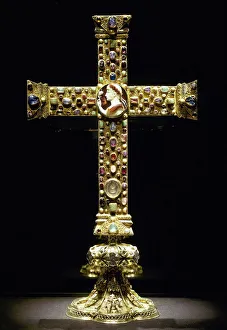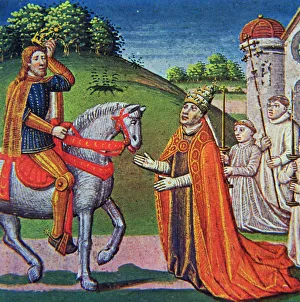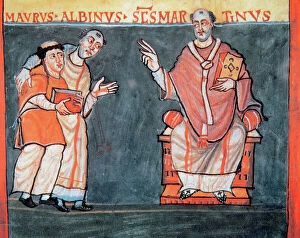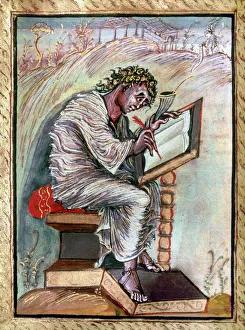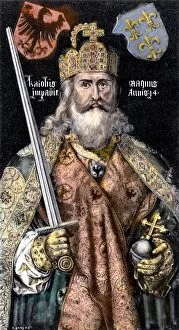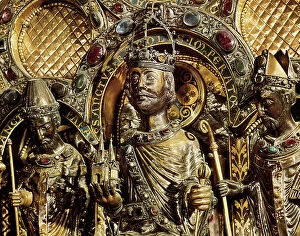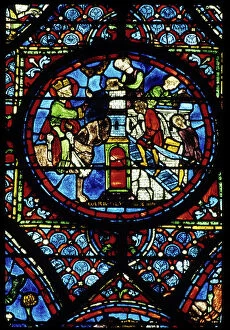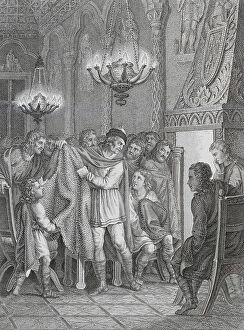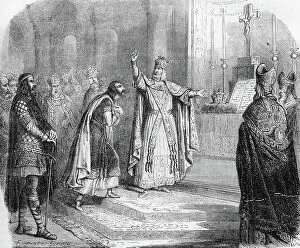Carolingian Collection
The Carolingian era, characterized by the reign of Charlemagne and his descendants, was a pivotal period in European history
All Professionally Made to Order for Quick Shipping
The Carolingian era, characterized by the reign of Charlemagne and his descendants, was a pivotal period in European history. It witnessed significant cultural, political, and religious developments that left an indelible mark on Western civilization. One notable event during this time was the meeting between Pope Adrian I and Charlemagne. This historic encounter is vividly depicted in a miniature found in the incunabula Chronicles. The image captures the significance of their alliance, which laid the foundation for a strong relationship between Church and State. Alcuin of York, a renowned scholar and advisor to Charlemagne, presents his work to Rabanus Maurus in another captivating scene. Their exchange symbolizes the intellectual vibrancy fostered under Carolingian rule as scholars like Alcuin played a crucial role in preserving knowledge from antiquity. The Cross of Lothair II housed at Aachen Cathedral Treasury stands as an exquisite testament to Carolingian craftsmanship. Its intricate design reflects both religious devotion and imperial grandeur—a fitting representation of Charlemagne's dual role as King of the Franks and Emperor of the West. Religious manuscripts also flourished during this era. One such example is an illuminating depiction showcasing Saint Matthew writing his gospel under divine guidance—an awe-inspiring reminder of how faith intertwined with artistic expression during this time. Charlemagne's influence extended beyond politics; he was also deeply invested in education. An engraving based on Albrecht Durer's painting portrays him visiting a school—a visual testament to his patronage of scholars and commitment to learning that earned him recognition as the patron saint of schools. Le Nouveau Theatre du Monde provides us with an expansive view into Charlemagne's vast empire—stretching across Europe—and highlights its geopolitical importance during this epochal period. Another remarkable artwork is found within De Universo by Rabanus Maurus—the coronation scene capturing Charlemagne being anointed as Emperor.

